You have no items in your cart. Want to get some nice things?
Go shopping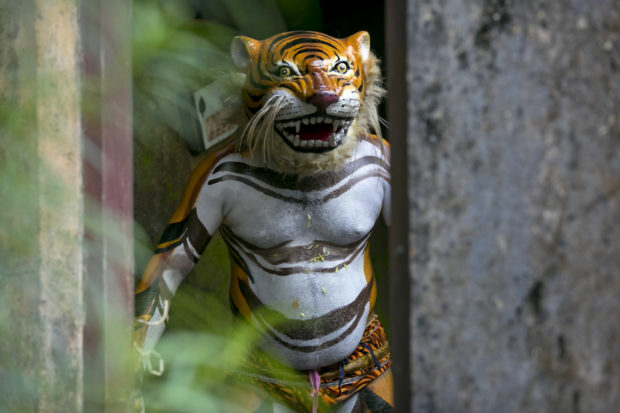
Around the months of September and October each year, as the ten day festival of Dussera approaches, boys and men in the Dakshin Kannada in southwest India, in the region of Karnataka, prepare to become the character of a tiger in terms of looks and certain traits. The tiger, the Goddess Durga’s steed, is an animal that is at once fierce and beautiful, an emblem of wild majesty. It so happens that the thick forests of the Western Ghats that run through the area are among the few landscapes in India, home to Panthera tigris tigris, the Bengal tiger.
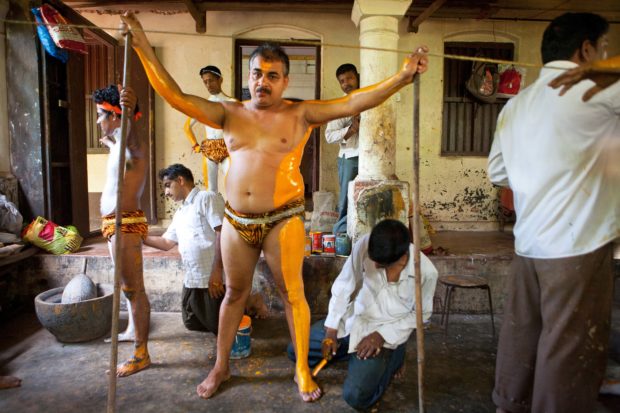
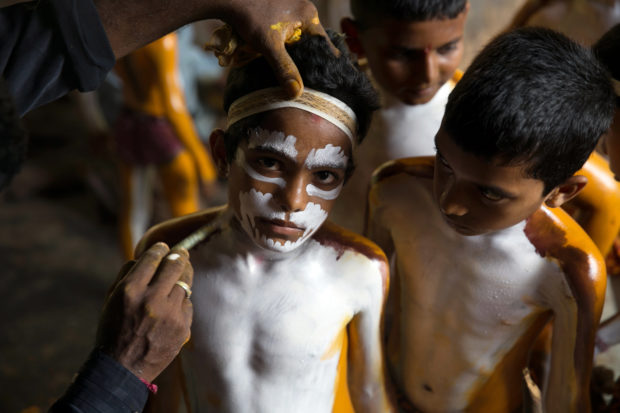
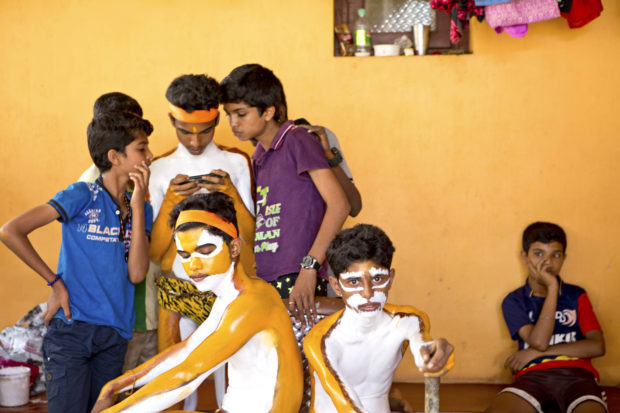
Curiosity led me on a journey that spanned nearly six years, with repeated visits to the area, and created a lasting friendship with the Gopala Krishna Bhajana Mandali, one of the oldest troupes to perform the Hulivesha. With the Mandali (which translates to “company” or “troupe”), I learned that there is a specific process, as well as many meanings, attached to the ritual of being transformed into a painted tiger. I grew up with a deep interest in the folk art and dances of Karnataka and, when I chanced upon the Hulivesha during a visit to Mangalore, it was only natural for me to want to know more about this interesting and unusual form of folk art. The contrasts that this series captures is what I find fascinating about the practice of art form. This folk art is more to do with one’s belief in communicating with the super power, God, by performing very intense form of dances. These art forms allow us to reflect on how things coexist, and how we can communicate with God through these prayers and rituals.
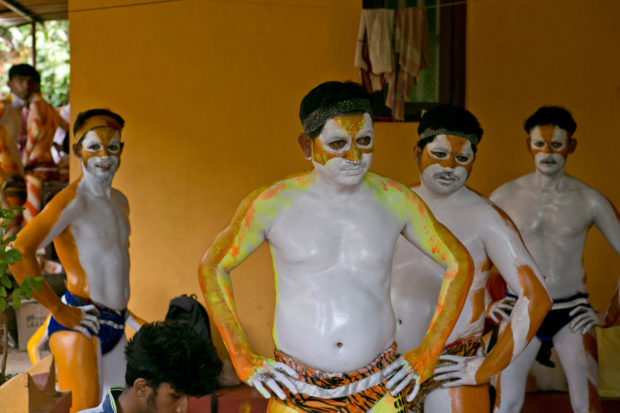
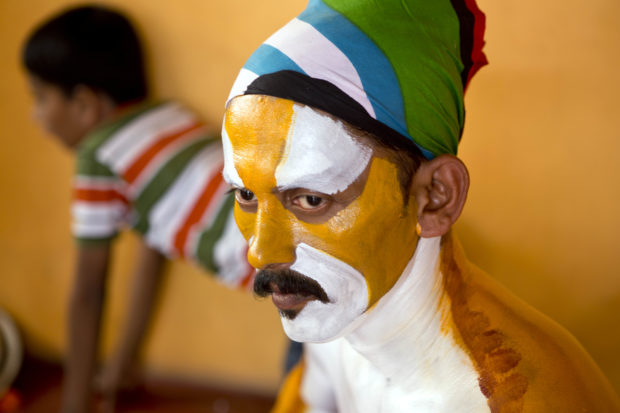
Hulivesha (which literally translates to “tiger mask”) is a folk dance form that honours the Devi, the Goddess Chamundi, and her favorite animal. For years, folk dancers of Hulivesha have embraced the spirit of the animal, painting its stripes on their body, allowing themselves to be moved by the drumbeats to celebrate the animal’s qualities.
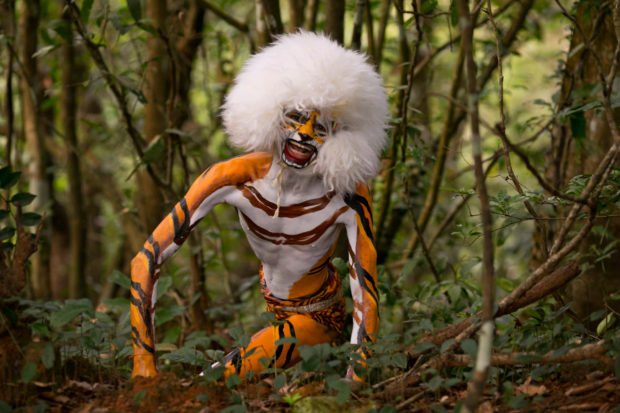
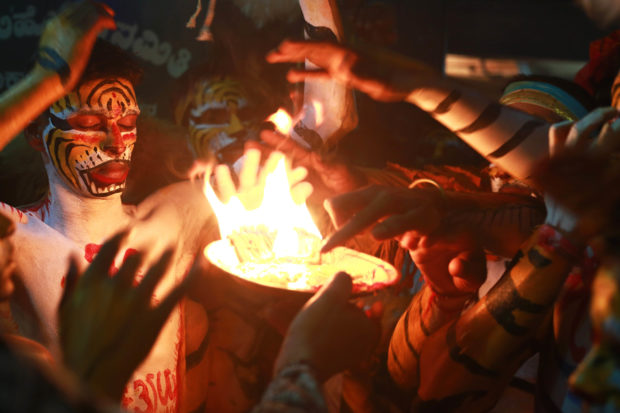
The group photographed in this series came with a diverse set of hopes and prayers. One member wished for divine blessings to build a house, another for a match for his daughter, a child with a leg problem prayed for it to heal; if it did, he promised to participate the following year in this folk art. For the men and boys who take part in the dance, it is an extraordinary time for a period of a day or two atleast where they cease to be ordinary people engaged in the mundane routines of everyday life. Donning the tiger stripes is a form of worship, a mode of penance, and a path to wish fulfillment. The present-day Hulivesha is more pageantry than conservation. In a country where the tiger population seems to be slowly edging itself out of endangerment and extinction, Hulivesha can be a powerful medium that sensitises and educates. Indian folklore and Hindu mythology are incomplete without their animal actors. Be it through fables or through sacred texts, animals have been long revered and have played very critical roles. For instance, the great epic of Ramayan Lord Hanuman is the god form of the monkey with immense power and gratitude towards Lord Rama and Sita. We have stories of this kind where there have been characters of animals with great significance.
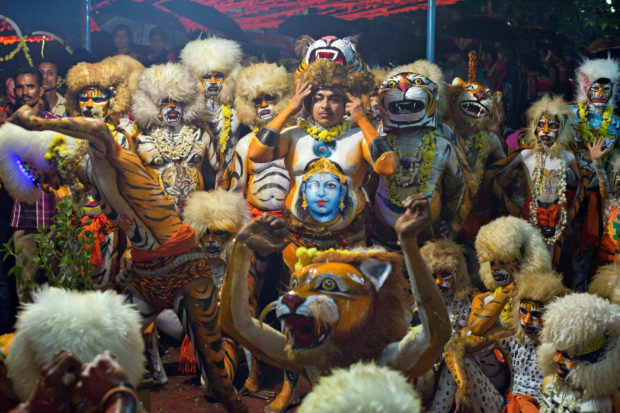
Long ago, the paints for Hulivesha were made using the roots of trees, but today they use oil paints, which are sticky and cause irritation and itching, and this discomfort last for days eveb after the festival. The men tolerate the discomfort because they revere the spirit of the tiger and the festival, and believe that some discomfort once a year is worth it. These days, they even use distemper paint – another paint variant – usually meant to paint walls, but are relatively easier to wash off.
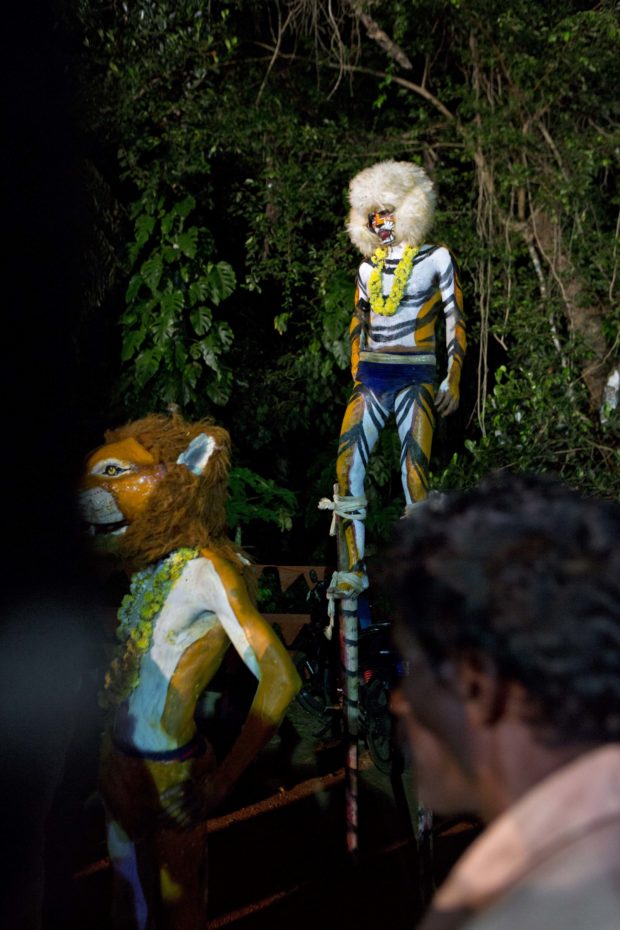
The painting of the body is a long and laborious process that often starts early in the morning , they begin with the colours yellow and white. All the dancers, about 30 to 40 people, queue up to get painted, and then wait for a couple hours for the paint to dry. Only then is it time for the colour black. They wait for their turns patiently, and are rewarded with glistening black stripes. The final round of paint is for the eyes, and then the last bits of touching up. Waiting for the paint to dry is part of the test. Hands legs are kept away from the body spread to enable the paint dries up, sometimes holding onto a line strung across the room for support.
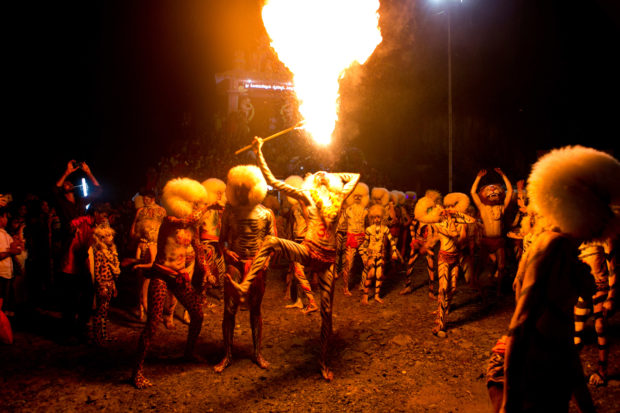
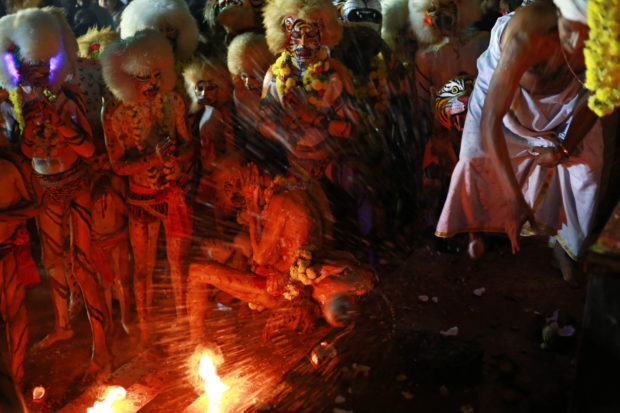
The dancing ends way past midnight and the dancers spend the early hours of the morning removing the paint off their bodies, using turpentine or kerosene. They cannot sleep with it on as it is very uncomfortable. Talcum powder is often used during the dance to provide some relief. Many of them are left with rashes. Yet, each year they do it again. The idea of the tiger as powerful, spiritual, and unknowable captivates and mesmerises us. It elicits reverence like no other animal does.
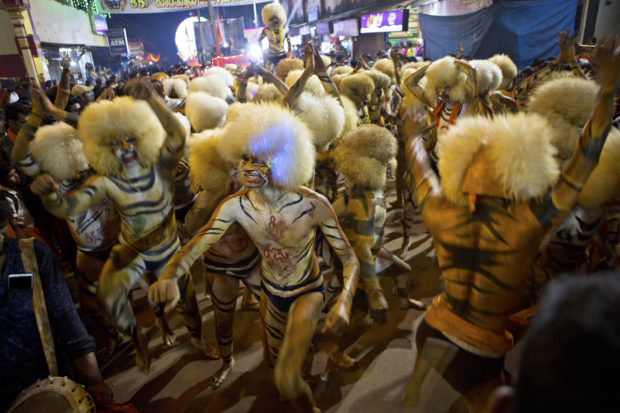
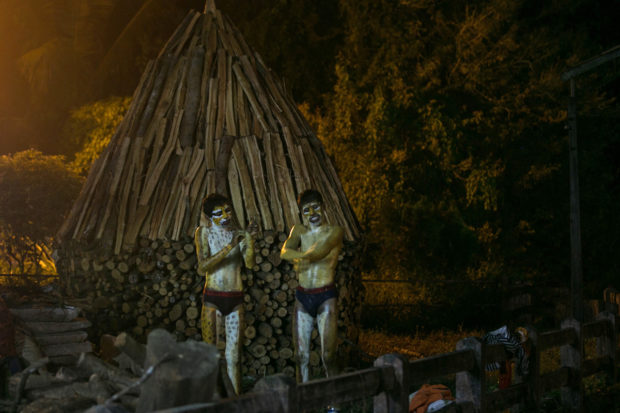

Pradeep K S
Pradeep KS is a photographer . His primary focus of inquiry is the shifting, ductile and transitory nature of the modern metropolis, as represented by its decay as well as its renewal and germination. He is particularly drawn to the rituals that lie beneath the veneer of urbanity with which the city clothes itself; the daily baptisms, bloodletting and antique liturgy that invigorates its being. In his efforts at documenting this quality of the metropolis, Pradeep spends significant portions of his time flitting about urban settlements and the exurban satellite clusters that are held in their gravitational pull.
- Web |
- More Posts(1)




